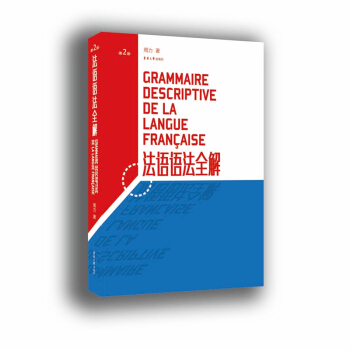![牛津英文经典:物种起源(英文版) [On the Origin of Species]](https://pic.tinynews.org/11886757/56dfebd0N2b370d45.jpg)

具体描述
编辑推荐
牛津大学出版百年旗舰产品,英文版本原汁原味呈现,资深编辑专为阅读进阶定制,文学评论名家妙趣横生解读。内容简介
19世纪30年代,达尔文乘贝格尔号舰进行了历时5年的环球航行,对动植物和地质结构等进行了大量的采集和观察,并于1859年出版了《物种起源》这一划时代的著作。达尔文首次提出了自然选择是演化的机制,并通过《物种起源》这本书证明进化论的真实性。进化论被恩格斯誉为19世纪自然科学的三大发现之一,对后世影响深远。作者简介
达尔文(1809—1882),英国生物学家,进化论的奠基人。1859年出版的《物种起源》是划时代的著作,提出了以自然选择为基础的生物进化论学说,对唯心的神造论、目的论和物种不变论提出根本性的挑战,使当时生物学各领域的概念和观念发生剧变。恩格斯更是将“进化论”列为19世纪自然科学的三大发现之一。精彩书评
达尔文所阐述的进化论是19世纪自然科学的三大发现之一。——恩格斯
我认为《物种起源》这本书的格调是再好也没有的,它可以感动那些对这个问题一无所知的人们。至于达尔文的理论,我即使赴汤蹈火也要支持。
——赫胥黎
目录
IntroductionPostscript
Note on the Text
Select Bibliography
A Chronology of Charles Darwin
ON THE ORIGIN OF SPECIES
Appendix 1: Register of Writers
Appendix 2: Glossary of Scientific Terms
Index
精彩书摘
WHEN on board HMS Beagle, as naturalist, I was much struck with certain facts in the distribution of the inhabitants of South America, and in the geological relations of the present to the past inhabitants of that continent. These facts seemed to me to throw some light on the origin of species—that mystery of mysteries, as it has been called by one of our greatest philosophers. On my return home, it occurred to me , in 1837, that something might perhaps be made out on this question by patiently accumulating and reflecting on all sorts of facts which could possibly have any bearing on it. After five years’ work I allowed myself to speculate on the subject, and drew up some short notes; these I enlarged in 1844 into a sketch of the conclusions, which then seemed to me probable: from that period to the present day I have steadily pursued the same object. I hope that I may be excused for entering on these personal details, as I give them to show that I have not been hasty in coming to a decision.My work is now nearly finished; but as it will take me two or three more years to complete it, and as my health is far from strong, I have been urged to publish this Abstract. I have more especially been induced to do this, as Mr Wallace, who is now studying the natural history of the Malay archipelago, has arrived at almost exactly the same general conclusions that I have on the origin of species. Last year he sent me a memoir on this subject, with a request that I would forward it to Sir Charles Lyell, who sent it to the Linnean Society, and it is published in the third volume of the Journal of that Society. Sir C. Lyell and Dr Hooker, who both knew of my work—the latter having read my sketch of 1844—honoured me by thinking it advisable to publish, with Mr Wallace’s excellent memoir, some brief extracts from my manuscripts.
This Abstract, which I now publish, must necessarily be imperfect, I cannot here give references and authorities for my several statements; and I must trust to the reader reposing some confidence in my accuracy. No doubt errors will have crept in, though I hope I have always been cautious in trusting to good authorities alone. I can here give only the general conclusions at which I have arrived, with a few facts in illustration, but which, I hope, in most cases will suffice. No one can fell more sensible than I do of the necessity of hereafter publishing in detail all the facts, with references, on which my conclusion have been grounded; and I hope in a future work to do this. For I am well aware that scarcely a single point is discussed in this volume on which facts cannot be adduced, often apparently leading to conclusions directly opposite to those at which I have arrived. A faire result can be obtained only by fully stating and balancing the facts and arguments on both sides of each question; and this cannot possibly be here done.
I much regret that want of space prevents my having the satisfaction of acknowledging the generous assistance which I have received from very many naturalists, some of them personally unknown to me. I cannot, however, let this opportunity pass without expressing my deep obligations to Dr Hooker, who for the last fifteen years has aided me in every possible way by his large stores of knowledge and his excellent judgment.
……
前言/序言
WHEN Charles Darwin published On the Origin of Species in November 1859 he presented it as a hasty introduction to his ideas, for which he would present further evidence in the future. So it may have seemed to him: the next was written in thirteen months after a gestation of more than twenty years. It was written in the anxiety of knowing that Alfred Russell Wallace, like Darwin himself earlier, had recently conceived of a process that Darwin would name ‘natural selection’. Instead of all species having been created together at the beginning of time, or even at punctuated intervals through time, the present array of kinds throughout the world had come into being by a gradual process of genetic differentiation and selection under environmental pressures, Slight mutations could advantage individual organisms, and such mutations might then be enhanced over generations. This insight involved extinction as well as proliferation; it was disquieting in a great number of ways, however much each man later sought to palliate the disturbance.The idea grew in both minds through extensive travel as natural historians, through detailed observation of nature phenomena around the world (not always the same parts), and through dream and reflection, in each case it seemed to the thinker that the full force of the theory seized him after reading Thomas Malthus’s An Essay on the Principle of Population (first edition 1798), probably in the edition of 1826. Malthus argued that human population and population growth will always outrun resources of nutrition and space; therefore competition between those occupying common environments will control population. Scholar have since discriminated the differences between the theories of Wallace and Darwin and have demurred at, or emphasized, Malthus’s role. In 1858, though, the insight the two men shared seemed close enough to drive Darwin at last into a steady frenzy of composition.
Darwin wished to marshal sufficient evidence to convince scientists adept in a variety of fields, from geology to botany to taxonomy and morphology. At the same time he wanted to address a very broad spectrum of readers, thus acting as fundamental initiator and popularize at once. That is, the Origin was to speed up the process of reception, so that the ideas it contained could become available simultaneously to Darwin’s fellow-workers in science and to any educated person. In this double task the book was quite remarkably successful, perhaps the more so as Darwin himself made no stable discrimination between the diverse audiences he was addressing. The language of the text is accessible and non-mathematical. Yet evidence is piled on evidence for colleagues to pursue, as the ‘Register of writers referred to in the text of the Origin ’at the end of this edition makes abundantly clear. The continuing fertility of Darwin’s work for scientists is evident in the degree to which it is still a fundamental prerequisite for work in genetics and still a source of controversy in taxonomy.
The extraordinary creativity of the writing, and its capacity to lend itself to contradictory social programmes, comes out of this liberal amalgamation of audiences. Indeed, this openness plays into—is part of—the vigour of Darwin’s argument. It declares itself in the novelty of his associative power, and in his ability to pursue small discrepancies to large effect. Different readers can find their hopes and fears confirmed by extending the implications of Darwin’s thought in one direction or another; and, it would later prove, those readers might be individualists, Fascists, Marxists, imperialists, or anarchists—or indeed, quietists. There is something fascinating and perturbing in a text that, while pursuing, in Darwin’s words, ‘one long argument’, ballasted by multiple evidences, can generate such a variety of ideological potentialities.
To understand its impact in Western cultures over the pat one hundred and fifty years, it is necessary to track the history of the work and its context. This will help the reader to analyse the process by which Darwin’s ideas (or those associated with his name, not always to be found within the covers of this book) have come to have so dominant a role in the construction of social domains apparently remote from the biological. Darwin himself insisted always on constraining the extra-scientific implications of his work and resisted any overt politicization (itself, of course, a political position). Wallace, on the contrary, became an active socialist who saw evolutionism as caught into that enterprise. But it was Wallace who uncoupled the human from all other species development so as to preserve a place for the soul, and Darwin who, more radically, faced the complete integration of the human into the natural order. In this story no simple contraries survive.
Above all, the Origin made its impact because it raised questions fundamental to the life of humankind without making humankind the centre of its enquiry. That shift away from the centre was a silent and intense challenge to the reader’s assumptions. Survival and descent, extinction and forgetfulness, being briefly alive and struggling to stay so, living in an environment composed of multiple other needs, coupling and continuing, ceasing to be: all these pressures, desires, and fears are alerted in this work without any particular attention being granted to the human has a placed but has no always been present, and where other kinds have each their own lost and fitfully recorded histories: in the strata of rocks, in reproduction, in the silt of the deep ocean, on remote islands where conditions have not changed, in parthenogenesis or hermaphroditism (modes of production more stable than the two-sexed system humans share).
How did the work come to be? It began, as most projects do, before the author recognized its existence; perhaps before the author existed. To take that second prehistory first: there was a long hinterland of attempts to understand how the diversity of species had been established and whether changes had occurred through time. Some held to the view that all kinds had been table from the start of the world; others that different species had been introduced at intervals in a ‘progressive’ sequence. The Mosaic version of creation presented Adam with a complete roster of living kinds come into being at one time, to name at his own will. That strong myth certainly continued to command belief, or institutional acceptance, in England up to and beyond the generation in the late eighteenth century of Darwin’s innovative grandfather, Erasmus Darwin, who himself produced a proto-volutionary treatise, Zoonomia:
All warm-blooded animals have arisen from one living filament, which THE GREAT FIRST CAUSE endued with animality, with the power of acquiring new parts, attended with new propensities. . .and thus possessing the faculty of continuing to improve by its own inherent actively, and of delivering down those improvements by generation to its posterity, world without end!
Darwin later distanced himself from his grandfather’s theory by making it clear that there is no steady movement across all species towards complexity; it all depends on the relations between individual organism and medium:
As the variability of each species is an independent property, and will be taken advantage of by natural selection, only so far as it profits the individual in its complex struggle for life, so the degree of modification in different species will be no uniform quantity.(p.258)
The biblical account had also been under persistent pressure, particularly since Linnaeus set out a new scientific taxonomy of the relations between extant plant and animal kinds. Various versions of natural change had woven in and out for centuries. ‘Transmutation’ was not a new idea; it had been explored in the early nineteenth century by French scientists such asJean-Baptiste Lamarck and étienne Geoffroy Sain-Hilaire and , long before them, in literary texts such as Edmund Spenser’s Faerie Queene in the late sixteenth century. And metamorphosis, with its sideways motion, had been a familiar imaginative resource since Ovid and Apuleius. More directly, transformation within the individual life cycle was a familiar phenomenon among insects (butterflies were the most delightful and frequently cited example). This seemed to raise the possibility of natural change at a species level. Nor was the close relation of the human to other primates altogether ignored: Lord Monboddo insisted (to much mockery) that the orang-utan, though mute, was a brother to the human at an earlier point of development. And in discussions across a wide range of fields in the years before Darwin, the idea of ‘development’ was often figured as ‘progress’, or even—at the end of the eighteenth century in France—as revolution.
So these diverse elements, fruitful for evolutionary thinking, were already available and under discussion in intellectual and activist circles, some from long before Darwin was born and all before he was a grown man. Indeed, a number of recent historians have argued that, so widespread were these discussions at both a popular and a more technical level, that it is possible to construct a history of nineteenth-century evolutionary thinking almost without Darwin.
用户评价
从阅读的节奏感来看,这本书的结构布局非常引人入胜,它不像某些理论著作那样平铺直叙,而是像一位经验老到的演说家,步步为营,层层递进。开头总是从一个相对容易理解的现象入手,比如家禽的选育,以此建立起读者的初步认知基础,让人感觉“哦,原来如此”。接着,作者便开始巧妙地引入关键概念,通过大量来自不同领域的证据进行交叉验证,让你在不知不觉中接受其核心论点的合理性。这种写作手法的高明之处在于,它将一个可能引发巨大争议的革命性理论,用一种近乎田园牧歌式的、基于事实观察的叙事包裹起来,大大降低了初读者的心理防御。我发现,即便是那些最激进的观点,在它被一系列详实的数据和无可辩驳的推论所支撑时,也会变得异常可信。这是一种艺术,一种将科学的严谨性与人文的叙事性完美结合的艺术。
评分这本书,说实话,拿到手的时候,那种沉甸甸的质感就让人心头一震。封面设计得极其典雅,那种深沉的墨绿配上烫金的字体,透着一股子历经风霜的厚重感,绝非如今市面上那些花里胡哨的平装本可比。光是抚摸着封面的纹理,就能感受到它所承载的文化重量。我特意选了这个英文原版,主要是想领略一下那些经过时间洗礼的词句最原始、最精准的表达,而不是依赖任何翻译版本可能产生的偏差。每一次翻开它,都像是一次对历史的探访,那种油墨的清香混合着纸张特有的微酸,构建了一种近乎仪式感的阅读氛围。我常常在傍晚时分,关掉现代电子设备的喧嚣,只借着一盏暖黄色的台灯,沉浸在这本书的文字海洋中。这种体验是无可替代的,它强迫你慢下来,去细嚼慢咽每一个逻辑推导,去感受作者在构建其宏大理论框架时所倾注的巨大心力。尽管我深知其内容的深刻性,但仅仅是作为一件精美的出版物,它已经值回票价,它更像是一件可以世代传承的艺术品,静静地陈列在书架上,本身就是一种无声的宣言。
评分说实在的,这本书的价值,远超出了其作为一本科学读物的范畴。对我个人而言,它更像是一面镜子,映照出我对待未知事物时的思维定势和先验偏见。在阅读的过程中,我反复审视自己过去对“稳定”和“变化”的简单化理解。它教会我,世界万物都不是静止不变的,即便是看起来最坚固的事物,其内部也蕴含着持续的、微弱的驱动力,这种驱动力在漫长的时间尺度下,可以成就惊人的蜕变。这种宏大的时间观,极大地拓展了我对自身存在和人类历史的认知边界。它带来的影响是深远的,它不仅仅改变了我对生物学的看法,甚至影响了我对商业模式迭代、社会文化变迁的思考方式。每次合上它,我总会感到一种谦卑,面对自然界亿万年的演化史,人类的挣扎与成就,都显得如此渺小而又充满了奇迹。它提醒我们,知识的探索永无止境,而好奇心才是驱动一切进步的根本动力。
评分说来惭愧,我并非生物学专业出身,当初决定入手这本被誉为“科学史里程碑”的著作,更多是出于一种对人类思想史脉络的好奇与敬畏。最初尝试阅读时,坦白讲,那密集的论证和大量基于当时观察的细致描述,确实对我构成了不小的挑战。它不像现代的科普读物那样,用生动的比喻和图表来迎合读者的理解速度,它要求你付出真正的智力努力。我发现自己不得不频繁地停下来,拿出笔记本,梳理那些复杂的因果链条。有时候,我会暂时放下它,转而去阅读一些相关的背景资料,了解一下达尔文所处的时代,他面对的是何等的学术阻力与思潮禁锢。这种迂回的阅读策略,反而让我对书中那些看似枯燥的实验观察和推理过程,产生了更深层次的共鸣。每一次攻克一个章节的逻辑难点,那种成就感,绝非读完一本轻松小说所能比拟。它不是在“喂养”知识,而是在“训练”你的思维,教你如何系统地、不带偏见地观察世界。
评分这本书的装帧设计,真的体现了出版方对经典的尊重。我特别欣赏它所选用的纸张,那种略带米黄色的质地,不仅对眼睛友好,而且在光线下呈现出一种温暖的复古感,与书中讨论的主题——时间的漫长与演变的缓慢——形成了绝妙的呼应。书脊的处理也十分考究,即使经常翻阅,也不会出现轻易松脱的现象,牢固得仿佛要伴随我一生。而且,边距的处理得恰到好处,为那些喜欢在书页上做批注的读者留下了足够的空间。我习惯用细头的铅笔轻轻勾勒出我认为关键的句子,那些被标记出来的段落,仿佛因为我的介入,而与我建立了某种独特的连接。这不仅仅是一本书,它更像是一个思想的容器,一个可以让你随时回去重访与对话的伙伴。每次拿起它,我都会被它那种不动声色的力量所感染,那是一种不靠喧哗,仅凭真理的力量所建立起来的权威感。
评分全英文版书,书很好,孩子喜欢看,纸张也不错,无异味,字迹很清晰,,,,
评分买了几本牛津英文经典的书,准备好好看看~~一直看阿加莎,福尔摩斯的没看过,准备试试
评分亚当·斯密是十八世纪中期英国负盛名的政治经济学家和伦理学家,他一生研究的学问涉及天文学、纯文学、修辞学、哲学、伦理学、政治学、法学和政治经济学等。《国富论》奠定了他作为英国古典政治经济学奠基人的崇高地位和名望。
评分经典著作,希望能有所收获。
评分挺好的,原作第二版,拿来练英语也不错
评分喂马劈柴周游世界,去远方去流浪
评分应该是正版!书是真的很厚,好在莎翁的作品自身就很有吸引力,慢慢阅读,细细品味!
评分非常棒的原版引进书。牛津经典系列。
评分为了收集各个版本的茶花女,毕竟是我国翻译的第一本小说。
相关图书
本站所有内容均为互联网搜索引擎提供的公开搜索信息,本站不存储任何数据与内容,任何内容与数据均与本站无关,如有需要请联系相关搜索引擎包括但不限于百度,google,bing,sogou 等
© 2025 book.idnshop.cc All Rights Reserved. 静思书屋 版权所有






![牛津英文经典:沉思录(英文版) [Meditations] pdf epub mobi 电子书 下载](https://pic.tinynews.org/11894379/56f50fa5Ne75c10a8.jpg)

![牛津英文经典:双城记(英文版) [A Tale of Two Cities] pdf epub mobi 电子书 下载](https://pic.tinynews.org/11980703/57e4d9dcNdee4ed47.jpg)







![心灵鸡汤:路过心上的美丽英文 [Chicken Soup for the Soul:Find Your Happiness] pdf epub mobi 电子书 下载](https://pic.tinynews.org/11436294/rBEhV1M6MuIIAAAAAAkB8gQt3F4AALJfwKMhGoACQIK716.jpg)

![不管三七二十一 零起点韩语入门就这么任性 这99句韩语不会怎么行? [韩语就该这样学!韩语40音不会怎么行?] pdf epub mobi 电子书 下载](https://pic.tinynews.org/11897946/56f89b93N459740a2.jpg)

